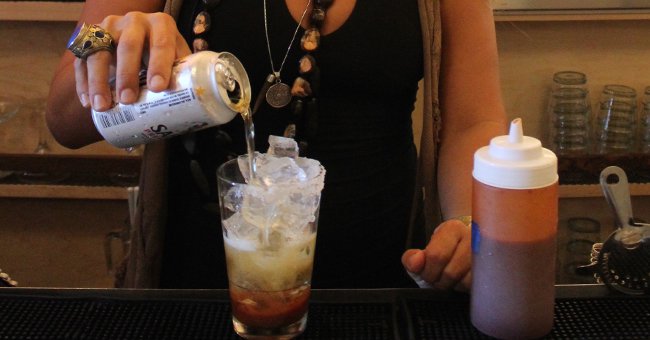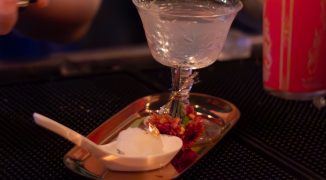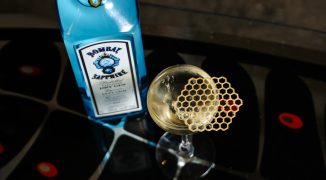The word “michelada” is a Spanish portmanteau that combines “chela” (slang term for beer) with “ada” for “helada,” meaning cold, and “mi” for mine — my cold beer. Widely known as a Mexican Bloody Mary (red in color, flavorful, and spicy), with beer subbing in for vodka, the word has become a catch-all for a beer cocktail that combines hot sauce, acid, and cheap, light beer. Micheladas appeal to bartenders both for its classic blend of flavors, easily applied to a range of cuisines, and as a means to offer a cocktail without a liquor license.
Micheladas crept slowly out of Mexican restaurants and onto brunch menus of all kinds. Now, they’re being dressed up to complement a wide variety of cuisines and to serve as a complex way to down cheap beers, day or night.
In Mexico, the drink typically sticks to its traditional roots. Julie Meade, author of “Moon Living Abroad in Mexico,” says, “The recipe varies, but generally micheladas in Mexico contain a mix of Maggi liquid seasoning, Worcestershire sauce, lime juice, and some sort of picante (like Cholula) … and it’s served in a glass with ice and a salted rim.” In the nation of their origin, they’re part of a “spectrum of beer cocktails, like the Cubana (a beer served over ice and lime juice in a glass with a salted rim) and beer with Clamato, a surprisingly popular drink.”
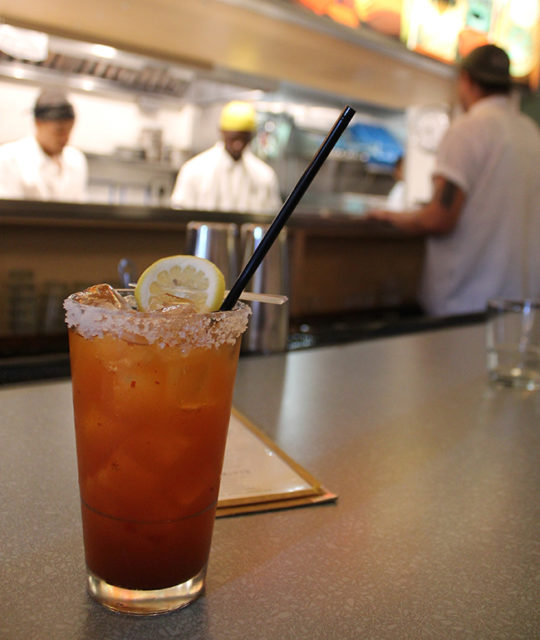 Ivan Ramen’s “Supashina Biru,”a Japanese take on the michelada combines sambal, tonkatsu, yuzu, Sapporo beer and the same arashio salt that’s in the ramen broth, for a flavor that stands up to their famous ramen.
Ivan Ramen’s “Supashina Biru,”a Japanese take on the michelada combines sambal, tonkatsu, yuzu, Sapporo beer and the same arashio salt that’s in the ramen broth, for a flavor that stands up to their famous ramen.
In New York City, there are numerous takes, many that include liquor, and it’s not limited to brunch menus. At the Lower East Side’s Ivan Ramen, bar manager Jennifer Delgrande’s Japanese michelada, “Supashina Biru,” uses sambal for spice, tonkatsu as its Worcestshire component, yuzu (an East Asian citrus fruit) instead of lime, Sapporo beer and the same arashio salt that’s in the ramen broth. The glass is rimmed with yuzu, lemon, and the flaky, soft arashio. This adaptation cools the heat of the ramen, but the bursting spice and zest from the uncommon citrus prevent the drink from being overpowered by a flavorful meal.
“If you don’t have a full liquor license, you need a beer cocktail,” Delgrande says, and this is how she’s worked around it. Other cocktails on the menu include sake, which she manipulates and ages to make it taste like other liquor, and she also uses non-alcoholic bitters.
Not too far from Ivan Ramen is Timna, where GM and beverage director Amir Nathan serves a Moroccan michelada during brunch. Here the red hue is replaced by an earthier tone, contributed by housemade harissa and preserved lemon, and it’s given a smoked paprika rim, all inspired by chef Nir Mesika’s focus on North African flavors. It’s less spicy and more smoky, topped off with a light lager in a glass that’s been washed with star anise.
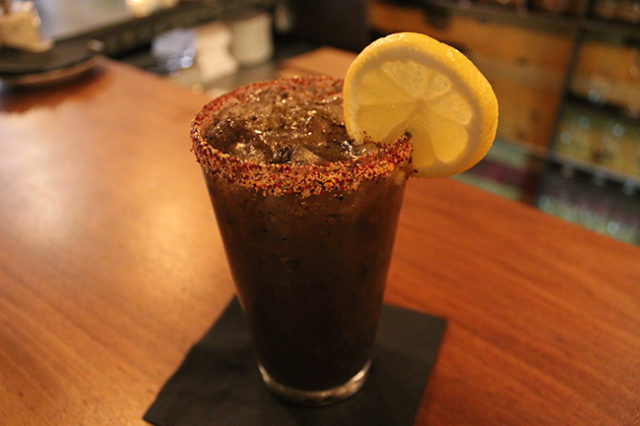 Timna, a North African inspired restaurant, serves a michelada with housemade harissa, preserved lemon, and a smoked paprika rim, topped off with a light lager in a glass that’s been washed with star anise.
Timna, a North African inspired restaurant, serves a michelada with housemade harissa, preserved lemon, and a smoked paprika rim, topped off with a light lager in a glass that’s been washed with star anise.
This michelada was also “a creative solution with no liquor license,” says Nathan, and they had to do some kind of Bloody Mary for brunch. The flavor profile of the michelada provided a clear template and a means of further presenting the restaurant’s concept. Because it’s so flavorful, it’s not served with dinner, but complements shakshuka and the restaurant’s seasonal pickles.
For an expert take on the classic michelada in New York City, go to Empellón Al Pastor. Beverage director Noah Small traveled to Mexico with chef Alex Stupak to eat al pastor tacos, and they asked themselves, “What do you have in your other hand when you’re eating an al pastor taco?” The answer? A michelada. Not content to do just a basic take, the menu at Empellón Al Pastor now features five versions.
Their house michelada uses Mexicali—a conscious decision, Small says, to stay away from Tecate, which has been “co-opted by the PBR crowd.” Al Pastor has a full liquor license, so they also macerate serrano chilies in tequila to give the liquor component a sweetness and subtle heat. He chose serrano over jalepeño because it’s got a more intense, mid-palate heat and doesn’t read as a specific chile, and because we’re all accustomed to jalepeños’ grassiness. It takes the classic base and elevates it, bringing in complexity while still offering enough balance that it’s utterly drinkable. “We don’t want these to be one and done,” Small says. “We want people to keep drinking.”
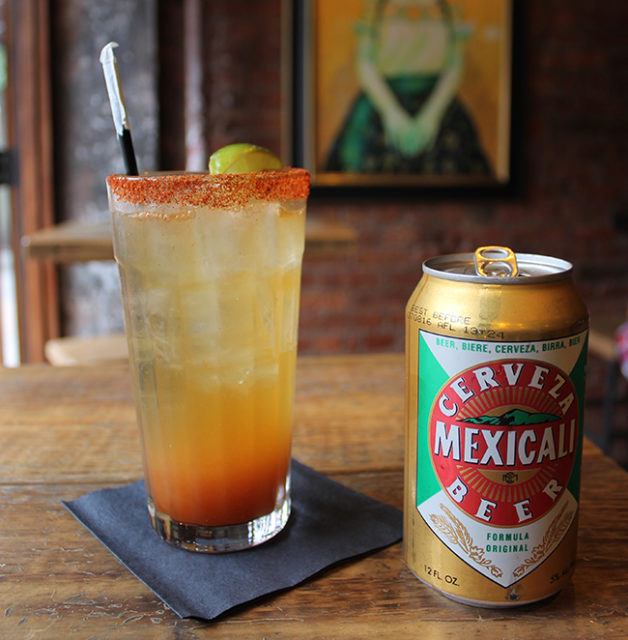 Their house michelada at Empellón Al Pastor uses Mexicali beer and tequila with macerated serrano chilies for sweetness and subtle heat.
Their house michelada at Empellón Al Pastor uses Mexicali beer and tequila with macerated serrano chilies for sweetness and subtle heat.
Their El Cuñado michelada—meaning “brother-in-law”—takes a Yucatán flavor profile and uses Victoria beer, from the makers of Modelo. It has a heavily fruity flavor from passion fruit with the floral heat of habanero. They de-seed the habaneros and cook them down to make a paste, then blend that with passion fruit. “It’s carried over from Mexican cooking; each chile is nuanced and treated differently,” Small says.
Empellón Al Pastor also has their own Japanese michelada with yuzu and white miso, a more malty version called “Miceloté,” crafted by chef Wylie Dufresne—which takes on the flavors of eloté, grilled corn—and an Andrew Zimmern take called “El Chambovaca,” that includes beef broth.
These bartenders are redefining micheladas, offering versions for a variety of palates and menus. The classic michelada is nothing without its context, but it’s a context that can be redefined and manipulated, making it into a cocktail not just to be mindlessly downed while hungover at brunch.


